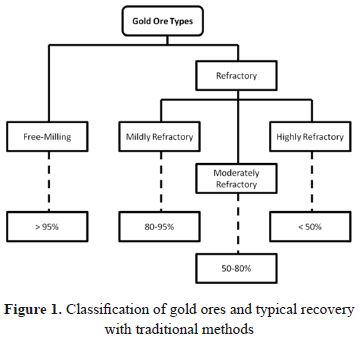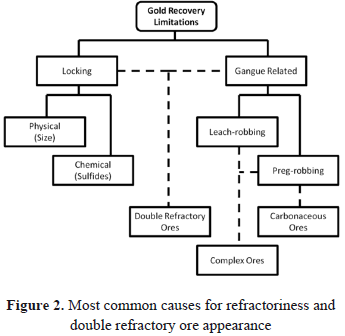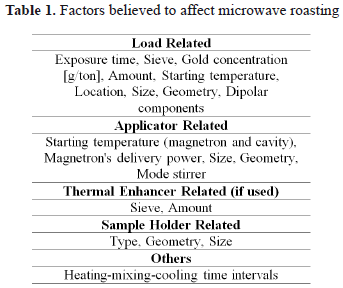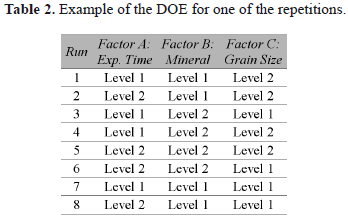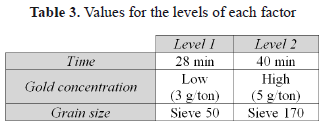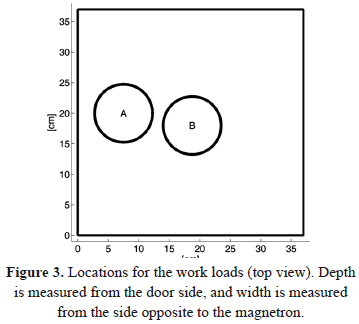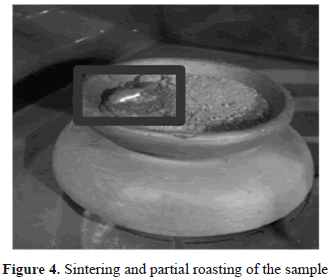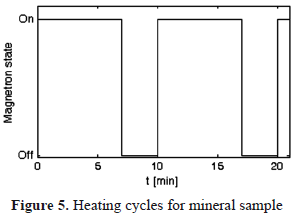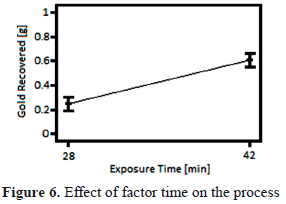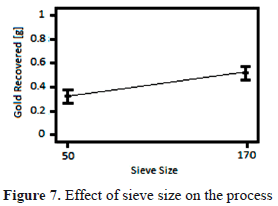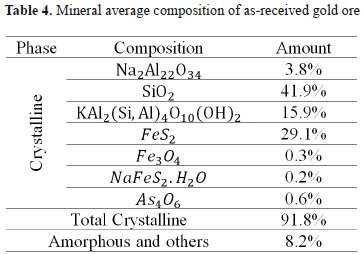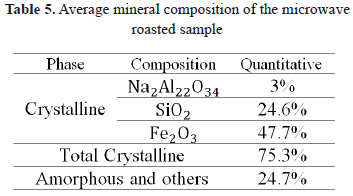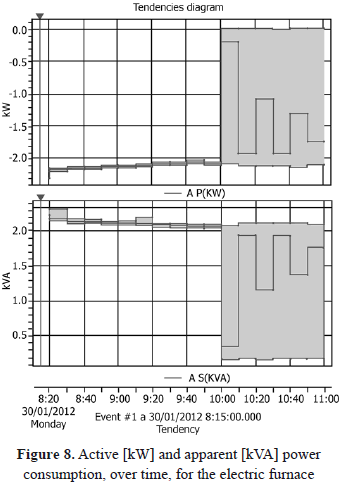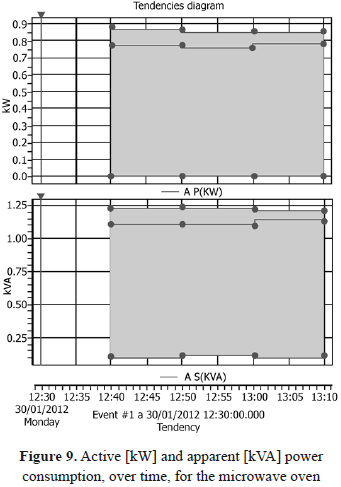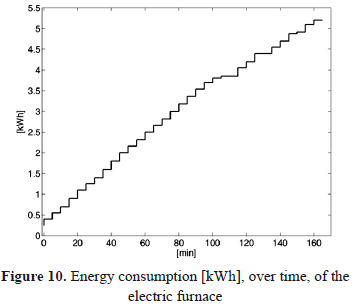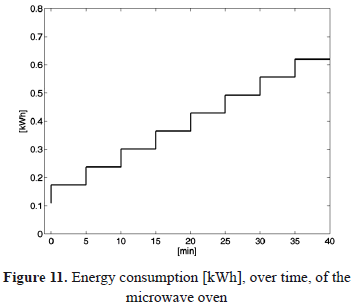Serviços Personalizados
Journal
Artigo
Indicadores
-
 Citado por SciELO
Citado por SciELO -
 Acessos
Acessos
Links relacionados
-
 Citado por Google
Citado por Google -
 Similares em
SciELO
Similares em
SciELO -
 Similares em Google
Similares em Google
Compartilhar
DYNA
versão impressa ISSN 0012-7353
Dyna rev.fac.nac.minas vol.80 no.178 Medellín mar./abr. 2013
IMPROVED ROASTING OF SOME COLOMBIAN GOLD ORES
TOSTACIÓN MEJORADA DE ALGUNAS MENAS DE ORO COLOMBIANAS
IVÁN AMAYA
Ph.D(c.)., Mechatronics Engineer, Universidad Industrial de Santander-Colombia ivan.amaya2@correo.uis.edu.co
DANILO BERNAL
Electronics Engineer, Universidad Industrial de Santander- Colombia, destebanb@gmail.com
SERGIO GARNICA
Electronics Engineer, Universidad Industrial de Santander- Colombia sergio.garnica86@gmail.com
MAURICIO RESLEN
Electronics Engineer, Universidad Industrial de Santander- Colombia mauricioreslen@hotmail.com
RODRIGO CORREA
Ph.D., Professor, Escuela de Ingenierías Eléctrica, Electrónica y de Telecomunicaciones, Universidad Industrial de Santander- Colombia crcorrea@uis.edu.co
Received for review February 29th, 2012, accepted December 20th, 2012, final version January, 18th, 2013
ABSTRACT: This article shows the main results after roasting a gold ore with electromagnetic waves. A mineral sample from southern Bolivar (Colombia) was chosen, due, among other reasons, to the difficulty that miners from that zone tend to have when trying to recover the gold by traditional means. It was found that after applying electromagnetic waves in the microwaves range, roasting time was reduced by 77 to 83%, on average decreasing the consumption of electrical energy by about 88%, while allowing gold recoveries of about 90% (w/w) of that achieved through traditional roasting. This indicates that it is an alternate treatment worth deeper exploration at pilot plant scale.
KEYWORDS: Roasting, microwaves, gold, mineral ore, dielectric heating.
RESUMEN: El presente artículo muestra los principales resultados obtenidos al realizar la tostación con ondas electromagnéticas a un mineral de oro. Se escogió una mena del sur de Bolívar (Colombia), debido entre otras razones, a que los mineros de dicha zona suelen tener problemas para recuperar el mineral precioso por medios tradicionales. Se encontró que al aplicar ondas electromagnéticas en el rango de las microondas, el tiempo de tostación se redujo entre el 77 y el 83%, una disminución promedio cercana al 88% del consumo de energía eléctrica y se logró una recuperación de aproximadamente el 90% (peso/peso) de la obtenida con una tostación tradicional a nivel de laboratorio. Esto indica que es una alternativa que justifica estudios más profundos a escala de planta piloto.
PALABRAS CLAVE: Tostación, microondas, oro, minerales, calentamiento dieléctrico.
1. INTRODUCTION
Microwave applications have been around for several years. What began with Faraday's discovery in 1831, found one of the first practical applications with Hull's 1920 invention: the magnetron. Since then, this research field has experienced a continuous growth, being able to define the period from 1935-1945 as "golden years for advances in microwave technology". In 1946, the US Federal Communications Commission (FCC) allocated the 915 and 2450 MHz bands for microwave ovens. Since then, its market has been emerging and improvements are being made to different processes [1]. Even though the most common application for these bands are radar-related, there is abundant evidence of heating-related ones [2]. Among them, mineral processing plays a significant role, and important results have been achieved [3], [4]. This article shows results of Colombian gold samples that were irradiated with microwaves. It was found, among other things, that time reductions of the order of 77-83% were possible to achieve, when compared to roasting times from a traditional electric furnace, used during a laboratory scale smelting.
2. FUNDAMENTALS
2.1. Microwave Heating
As opposed to traditional heating, where the energy is transferred through conduction, convection and radiation, the one generated by microwaves is based on the interaction of an alternating electromagnetic field and the material. Because the fundamentals of heat transfer using electromagnetic radiation can be found in several books and articles, those will not be presented here [5-8]. However, it is important to stress the importance of a material's dielectric properties for this process. Equation (1) shows the expression for the power density (PD), which is an estimate of the energy-heat conversion at a given point inside the applicator. It can be seen that there is a dependence on both the dielectric and the diamagnetic properties of the sample. However, since the behavior of the latter is not significant, at least in principle, for most materials, then the second term is generally neglected. Therefore, the power density is found to depend only on the operating frequency (f, assumed as 2.45 GHz for this research), the squared value of the electric field strength (peak to peak) at a given point (E2), the vacuum permittivity (∈0), and the effective loss factor of the sample (∈"eff).

2.2. Microwave Treatment of Mineral Ores
Amankwah et al. [3] performed an analysis of the influence of microwave heating in a free-milling ore. They found that by using dielectric heating, the crushing strength was reduced by 31.2% and the reception of reagents was increased, thus reducing the leaching time from 22 hours to just 12. The recovery percentage was over 95% (w/w), which complies with the recovery rate expected for free-milling gold ore. The authors proposed some terms to rate a material response to the microwaves, which are inactive, active and hyperactive, the latter being the one that heats faster. One of the reasons they propose for the reduced time, is that due to the mixture of inactive and hyperactive materials, the temperature rises quickly in some spots while remaining almost constant at others, thus creating thermal stress. This increases to a value where it overcomes the material resistance and generates micro-cracks along the grain boundaries and through the grain itself.
There is also evidence of increased leaching rate from chalcopyrite, going from 10.2% copper recovery without any treatment, to 32.21% (and even up to 53.74%) with microwave pre-treatment at low temperatures [9]. Kaya also explored the effect of microwave treatment in copper recovery. However, this time a sulfide ore was used and the results were restricted to observing the improvements in flotation. It was found that at high temperatures, flotation recovery is adversely affected, and that any economic gain achieved with an improved grindability will be outweighed by the loss in flotation [10]. It is important to remark that during this incipient economic analysis, the cost of grinding elements and the increased usable life of machines, was not accounted for, which could change the results. These studies provided interesting information, making gold recovery improvement worth exploring. As stated by Agrawal et al. [11], a metallic material begins coupling with microwaves if its temperature is around 400 °C, which is vital if a more environmental process is to be achieved, and that can be done easily if a thermal enhancer (such as silicon carbide) is used.
Some other interesting research in the area include the numerical modeling proposed by Whittles [12], which can be used as a basis to simulate the benefits achieved by microwave processing. Also, the investigation by Nanthakumar et al., where successful results with a double refractory gold ore (one of the most difficult to recover) are presented [6], similarly the one by Amankwah et al., where more results with a free-milling ore are shown [13], and the research by Kingman et al., where some more results regarding copper recovery improvement are shown [14].
2.3. Types of Gold Ores
Gold mineral ores can be divided, from a metallurgical point of view, into two groups: free-milling and refractory. The latter one can be further divided into three subgroups, depending on how difficult it is to separate the gold particles from the ore. Therefore, four groups appear, which are summarized in Figure 1: free-milling (i.e. not refractory, recoveries over 95% can be easily achieved), mildly refractory (recovery between 80-95%), moderately refractory (recovery between 50-80%) and highly refractory (recovery below 50%). Some studies have been carried out to try to determine the causes for refractoriness, and Vaughan synthesized most of them [15]. He found that the main cause is submicroscopic gold, located especially inside pyrite and arsenopyrite, which increases an ore grade, but which is also hard to separate due to its small size. One solution for this case is to grind the ore to a finer size. However, this increases waste product due to slime generation. High levels of Au-Ag tellurides, which have poor solubility in cyanide, as well as very fine grained gold inside sulfides, also contribute to making the ore refractory. In these cases, it is said that the gold is "locked" because it cannot be accessed by cyanide.
Besides the physical or chemical locking inside the ore, Vaughan also summarizes two types of ores, difficult to treat, but due to the gangue minerals. They are known as carbonaceous and complex ores. In these ores, the gold particles are free and are big enough to be easily recovered. However, in the first case, the particles are re-adsorbed by the minerals that compose the gangue (process known as preg-robbing), thus reducing the recovery efficiency. The second group generally has elements such as Copper (Cu), Cobalt (Co), Bismuth (Bi) and Uranium (U), the first one being the most common and abundant, thus naming the ore as copper-gold ore. Composites such as pyrrhotite, as well as some secondary copper sulfides, adsorbs the leaching solution (leach-robbers), thus increasing the consumption of reagents. Even so, complex ores can also manifest the preg-robbing effect [15]. It is important to remark that if both obstacles are present in the ore (i.e. locking due to sulfides and carbonaceous matter), it is catalogued as a double refractory ore, which is even harder to process [6]. This information is summarized in Figure 2.
2.4. Traditional Gold Recovery
The recovery rate of refractory gold ores, through traditional means, can be improved with a prior roasting of the mineral sample. This requires a temperature around 700°C, and constant oxygenation, so the sulfur-based compounds are able to transform into oxides. By doing so, gold can be more easily trapped by leach liquors. Traditional roasting processes at laboratory level are performed in an electric furnace. In the tests performed the process took from two to four hours, including the time required to achieve the set temperature.
Contrary to the industrial scale, in a laboratory gold is commonly recovered through a smelting process using lead and other reagents. This was done in order to recover as much gold as possible, since the efficiency of the smelting process is higher than the one given by mercury or cyanide treatments. However, smelting cannot be used at bigger scales, until today, since the production costs could easily surpass the economical benefit of the enhanced recovery.
3. EXPERIMENTS AND RESULTS
A factorial 2k Design Of Experiments (DOE) was used to gather the data. Some of the main factors, which are believed to affect the microwave roasting process are shown in Table 1.
In the present article, all the factors were kept constant, except the first three of the load related row of Table 1. Nevertheless, there are some which were difficult, or even impossible to quantify, such as the initial electromagnetic field distortion due to the presence of the sample itself. In order to avoid any bias during the tests, they were performed in random order. Table 2 shows an example for one repetition of the experiment. It is important to remark that the other two repetitions are also random-ordered, and that they may not coincide with the order shown in Table 2. Also, the levels of each factor are summarized in Table 3.
3.1. Preliminary Tests
An initial mapping of the microwave oven was performed, Figure 2 heating a piece of wood for a couple minutes. After that, a slightly burned zone was found, due to the increased electric field. Afterwards, it was necessary to find the highest concentration zone in a vertical axis, so some tests were run at different heights. As a result, the position shown by A, in Figure 3, was found, and it was used during the rest of this stage. It is important to remark here that a clay-based mineral ore was used during the preliminary tests, basically to avoid the generation of toxic fumes.
After that, roasting was carried out, a thermal susceptor (Silicon Carbide, sieve 50) was mixed with the mineral ore, striving to enhance microwave absorption. After 10 minutes of exposure, a small portion of the mineral was roasted. Therefore, it was decided to change the carbide size, and test its effect on the sample. After the same exposure time, it was found that temperature had increased so much, that sintering was already present in the load (Figure 4), which is considered a detrimental effect in the traditional recovery stages (leaching or smelting).
Another interesting effect of microwave heating, was that the sample was nonuniformly roasted, so it was relocated, trying to center the phenomena. This provided a better roasted sample.
The mineral was then switched to the pyritic sample, from a mine called "Juan Blanco", located in southern Bolivar (Colombia). However, when a test was carried out, it was found that the mineral did not increase its temperature significantly. Since this is opposite to the expected reaction (pyrite is more susceptible to microwaves than clay), it was concluded that the high concentration zone had moved. After doing a sweep, it was found that the best location to place the load is the one given by B in Figure 3, so a test was executed. After the exposure time, the mineral had sintered, emitting, mainly, sulfur dioxide. Thus, it is concluded that the material needs to be irradiated in small time steps, allowing for oxygenation and manually mixing the ore to provide a more uniform temperature profile.
3.2. Fixed Tests
Using the high energy location for the pyritic sample, the design of experiments for roasting was carried out, using the factors/levels shown in Table 3Table 3. This time, however, the heating cycles used in Figure 5 were used. It is important to note that the times shown in the previously mentioned table, refer to the total amount of exposure time of the sample to microwaves (i.e. without considering the cooling/mixing periods).
It was found that a maximum gold recovery of 83.3% and 90% (w/w) of that achieved by traditional roasting, was possible for the low grade mineral and the higher one, respectively. This measurement was done in the same fashion as the ore grade is determined (i.e. through smelting). However, microwave roasted samples were used instead of traditionally roasted ones, thus achieving a different recovery rate. After analyzing the data from the DOE, it was found that the most important factors are time and sieve, with a direct impact, as shown by Figure 6 and by Figure 7, respectively. However, their interactions with the mineral are also representative (on a lesser scale, though). It is important to keep in mind that these results are only valid for the range used during the experiments (i.e. data cannot be extrapolated).
One way of verifying if the roasting was successful is through visual inspection. However, striving to reduce the error margin, a quantitative analysis was performed on both, the raw and roasted mineral samples, through X-ray diffraction. A Bruker dust difractometer, with DaVinci geometry was used for this stage. Table 4Table 4 shows the composition of the as-received mineral sample. It can be seen that it mainly presents a crystalline phase, composed mostly of quartz and pyrite. Thus, it is a refractory gold ore, due to the effect of the latter, so roasting is a good approach for increasing its recovery.
Table 5 shows the mineral composition for the microwave roasted sample. It can be seen that all the pyrite, and most of the lesser compounds, are gone, generating hematite and some non-crystalline phases, instead. Therefore, it can be said that microwave roasting was successful, which strengthens the idea of perfecting this process.
It can be concluded that the heating cycles have a positive effect on the recovery margin of gold ores, since it was possible to roast more mineral without sintering it. Thus, it would be advisable to design a control system that regulates the microwave energy delivered to the sample, as well as a mixing device and an oxygenation system, so the process can be executed in a continuous way. Moreover, it would be interesting to study the effects of longer total exposure times, in order to verify if it is possible to recover the same amount of gold as with traditional roasting.
3.3. Power Analysis
This section analyzes the energy consumption achieved through the traditional and microwave alternatives. To calculate them, active and apparent power, as well as total energy consumption, for both devices (electric furnace and microwave applicator), was measured and registered, through a power quality analyzer (PowerVisa), which registers a measurement every ten minutes.
It was found that the power consumption is quite different for both devices, as can be seen in Figure 8 and in Figure 9, for the furnace and the oven, respectively. The first one, requires an active power of 2.1 kW, whilst the second one only requires 0.8 kW, thus representing a 38.1% of the initial power. Regarding reactive power, it was found that the electric furnace has almost zero consumption, while the microwave oven consumes 0.68 kVAR. In spite of that, and considering that the required time for microwave roasting is about 75% lower than by traditional means, the total power consumption is still considerably lower.
Finally, an energy consumption analysis was carried out. Figure 10 Figura 26 shows the value achieved with the electric furnace, and Figure 11 the one obtained with the microwave applicator. From them it can be deduced that the former requires 5.2 kWh, while the latter one only consumes 0.62 kWh, thus providing a 88.1% reduction. Therefore, and at least from this point of view, microwave roasting is economically feasible.
4. CONCLUSIONS
It was possible to achieve a roasting time reduction of 77-83%, and an average energy consumption decrease of 88.1%. Moreover, high recovery rates (around 90% of lab-scale smelting rates) were possible, mainly due to the roasting of a great amount of the pyrites present in the mineral sample. The experiment was performed with a domestic microwave oven. However, special care was taken to find the highest energy concentration zone, since it is known that any load that enters the applicator, will distort the electromagnetic field distribution, due to the variation of the dielectric constant of the material. Thus, a relocation of the load is required every time that the mineral sample properties vary. Based on these results, a research is currently underway, which strives to vary the applicator dimensions (e.g. for a waveguide) in order to maximize the energy peaks, leading to higher heating rates and consequently a more rational use of energy.
ACKNOWLEDGEMENTS
This work was supported by Vicerrectoría de Investigación y Extensión (Universidad Industrial de Santander), in the framework of project 5551.
REFERENCES
[1] Sobol, H. and Tomiyasu, K., Milestones of microwaves, IEEE Transactions on Microwave Theory and Techniques, 50,3, pp. 594-611, Mar. 2002. [ Links ]
[2] Osepchuk, J. M., Microwave Power Applications, IEEE Transactions on Microwave Theory and Techniques, 50,3, pp. 975-985, 2002. [ Links ]
[3] Amankwah, R. K. and Ofori-Sarpong, G., Microwave heating of gold ores for enhanced grindability and cyanide amenability, Minerals Engineering, 24,6, pp. 541-544, May. 2011. [ Links ]
[4] Gaviria, A. C., González, J. and Mora, H. F., Tostación, Empleando Microondas, en Menas Refractarias Auríferas y su Efecto en la Extracción del Oro, Dyna, 73,150, pp. 29-37, 2006. [ Links ]
[5] Agilent, Agilent Basics of Measuring the Dielectric Properties of Materials, Measurement Techniques. Agilent Technologies, pp. 1-32, 2006. [ Links ]
[6] Nanthakumar, B., Pickles, C. and Kelebek, S., Microwave pretreatment of a double refractory gold ore, Minerals Engineering, 20,11, pp. 1109-1119, Sep. 2007. [ Links ]
[7] Meredith, R., Engineers' Handbook of Industrial Microwave Heating. The Institution of Electrical Engineers, London, 1998. [ Links ]
[8] Metaxas, A. C. and Meredith, R., Industrial Microwave Heating. IEE Power Engineering Series 4, London, 1983. [ Links ]
[9] Turkmen, Y. and Kaya, E., Leaching of Chalcopyrite Concentrate in Sulphuric Acid with the Aid of Mechanical Activation and Microwave Energy, Asian Journal of Chemistry, 22,10, pp. 8107-8116, 2010. [ Links ]
[10] Kaya, E., Effect of Microwave Radiation on the Floatation of Copper Sulfide Ores, Asian Journal of Chemistry, 22,10, pp. 7874-7882, 2010. [ Links ]
[11] Agrawal, D., Cheng, J., Peng, H., Hurt, L., and Cherian, K., Microwave Energy Applied to Processing of High-Temperature Materials, American Ceramic Society Bulletin, 87,3, pp. 39-44, 2008. [ Links ]
[12] Whittles, D., Application of numerical modelling for prediction of the influence of power density on microwave-assisted breakage, International Journal of Mineral Processing, 68, 1-4, pp. 71-91, Jan. 2003. [ Links ]
[13] Amankwah, R. K., Khan, A. U., Pickles, C. A. and Yen, W. T., Improved grindability and gold liberation by microwave pretreatment of a free-milling gold ore, Mineral Processing and Extractive Metallurgy, 114,1, pp. 30-36, Mar. 2005. [ Links ]
[14] Kingman, S., Jackson, K., Cumbane, A., Bradshaw, S. M., Rowson, N. A. and Greenwood, R., Recent developments in microwave-assisted comminution, International Journal of Mineral Processing, 74, 1-4, pp. 71-83, Nov. 2004. [ Links ]
[15] Vaughan, J. P., The process mineralogy of gold: The classification of ore types, Journal of the Minerals, Metals and Materials Society, 56,7, pp. 46-48, Jul. 2004. [ Links ]













